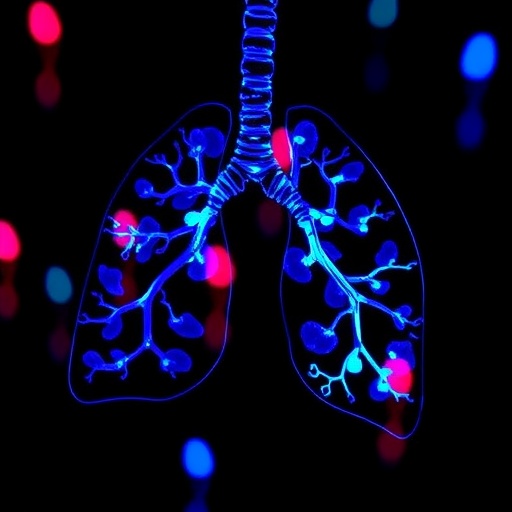In a groundbreaking new study published in BMC Cancer, researchers have unveiled compelling evidence that simultaneous inhibition of EZH2 and DNMT enzymes presents a potent therapeutic strategy against aggressive neuroblastoma. This pediatric cancer, notorious for its high lethality and resistance to conventional treatments, may finally have a promising molecular target who’s disruption induces tumor suppression through the destabilization of the oncogenic MYCN protein.
Enhancer of Zeste Homolog 2 (EZH2) is an epigenetic regulator known for catalyzing the trimethylation of histone H3 on lysine 27 (H3K27me3), a modification linked to gene silencing. EZH2 is frequently overexpressed in a variety of cancers, contributing to malignant progression by repressing tumor suppressor genes. Despite being recognized as a vital oncogene, the precise role of EZH2 in neuroblastoma and its therapeutic potential had yet to be thoroughly elucidated until now.
The study methodically classified neuroblastoma cell lines into EZH2 inhibitor (EZH2i) sensitive and resistant groups. Inhibition of EZH2 in sensitive cells resulted in marked suppression of proliferation and induced cell cycle arrest, underscoring the essential role of EZH2 in sustaining neuroblastoma growth. Transcriptome-wide analysis provided insights into the mechanisms underlying these effects, revealing a significant de-repression of genes implicated in cellular differentiation and cell cycle control, which likely contribute to the anti-proliferative phenotype observed.
Intriguingly, the resistant neuroblastoma cells displayed gene silencing patterns that could not be fully explained by H3K27 methylation alone, prompting the researchers to investigate alternate epigenetic mechanisms. DNA methylation, facilitated by DNA methyltransferases (DNMTs), emerged as a key suspect. Methylome profiling revealed that promoters of certain tumor suppressor genes remained hypermethylated in resistant cells, hinting that DNA methylation acts in concert to maintain repression and confer resistance to EZH2i.
The synergy of inhibiting both EZH2 and DNMT activity was striking. Treatment combining EZH2 inhibitors with 5-aza-2′-deoxycytidine (5-aza-dC), a DNMT inhibitor, not only led to pronounced suppression of neuroblastoma cell proliferation in previously resistant lines but also produced robust differentiation phenotypes. This synthetic lethality was evident both in vitro and in vivo, indicating its translational potential for clinical application.
At a molecular level, this combinatorial treatment dismantled the oncogenic MYC network. Specifically, it induced destabilization of the MYCN protein, one of the principal drivers of neuroblastoma malignancy, and suppressed c-MYC expression at both RNA and protein levels. This dual inhibition of MYC family oncoproteins underscores the critical dependency of neuroblastoma cells on these pathways and highlights a vulnerability exploitable by epigenetic therapies.
The study also identified a panel of genes including TRIM63, VSTM2L, GPNMB, and TIMP3, which were de-repressed by EZH2 inhibitors in sensitive neuroblastoma cells but silenced via promoter hypermethylation in resistant cells. These genes may serve as biomarkers for predicting tumor response to epigenetic therapy or as novel therapeutic targets themselves.
From a therapeutic standpoint, this research reaffirms the pivotal role of epigenetic regulation in neuroblastoma pathogenesis. The interplay between histone methylation and DNA methylation maintains the silenced state of critical tumor suppressor genes, and disrupting both pathways can reactivate their expression, halting tumor progression and promoting differentiation.
Furthermore, this work offers a rationale for designing epigenetic combination therapies tailored to overcome resistance mechanisms inherent in neuroblastoma. Given that MYCN amplification is associated with poor prognosis, strategies that induce MYCN destabilization through epigenetic modulation could dramatically improve patient outcomes.
Clinicians and researchers alike may find this study invaluable as it integrates molecular insights with practical therapeutic implications. It also raises critical questions about the broader applicability of synthetic lethality involving epigenetic modifiers in other MYC-driven cancers, potentially opening new frontiers in oncology.
The findings prompt a reconsideration of the conventional monotherapies targeting single epigenetic enzymes, which often encounter adaptive resistance. Instead, combinatorial targeting harnesses the complex interdependencies between different epigenetic mechanisms, amplifying therapeutic efficacy.
It is important to highlight that while these results are promising, further preclinical validation and carefully designed clinical trials will be necessary to evaluate safety, optimal dosing, and long-term outcomes of EZH2 and DNMT inhibitor combinations in pediatric populations.
Overall, this study represents a significant leap forward in understanding and manipulating the epigenetic landscape of neuroblastoma. It underscores the potential of epigenetic therapy to not only arrest cancer cell proliferation but also induce differentiation, potentially transforming the therapeutic paradigm for this devastating childhood malignancy.
As the scientific community continues to unravel the complexities of cancer epigenetics, such synergistic approaches may become a cornerstone for innovative, effective treatments that circumvent current therapeutic limitations.
The work conducted by Endo, Sugino, Takenobu, and colleagues thus stands as a beacon of hope, illuminating a pathway toward more targeted and durable treatment strategies for neuroblastoma patients worldwide.
Subject of Research: Epigenetic regulation and synthetic lethality in neuroblastoma via combined EZH2 and DNMT inhibition.
Article Title: Synthetic lethality of EZH2 and DNMT Inhibition suppresses neuroblastoma proliferation via MYCN destabilization.
Article References:
Endo, Y., Sugino, R.P., Takenobu, H. et al. Synthetic lethality of EZH2 and DNMT Inhibition suppresses neuroblastoma proliferation via MYCN destabilization. BMC Cancer 25, 1759 (2025). https://doi.org/10.1186/s12885-025-14882-7
Image Credits: Scienmag.com
DOI: 12 November 2025
Tags: cell cycle arrest in cancer treatmentDNMT enzyme inhibition therapyepigenetic regulation in cancerEZH2 and DNMT combination therapyEZH2 inhibition in neuroblastomahistone modification and gene silencingmechanisms of neuroblastoma proliferationneuroblastoma cell line analysisoncogenic MYCN protein destabilizationpediatric cancer treatment strategiestherapeutic targets in aggressive cancerstumor suppressor gene repression





